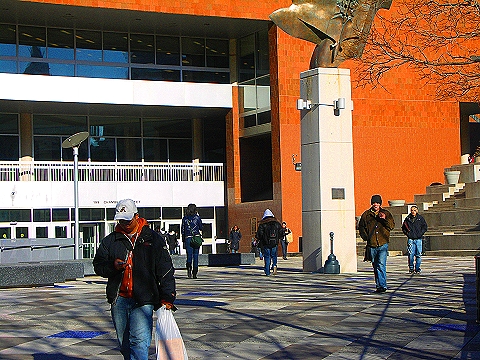After graduating high school, some students go with their parents to the bank to take out a loan for college.
Some go to the bank by themselves, and better yet, some don’t need to worry about paying for tuition.
But what happens when an 18 or 19-year-old walks into their bursar’s office and are given a plastic card with a Visa or MasterCard logo on it?
Many colleges do just this, refunding any overpayments on a stored value debit card rather than refunding cash directly to students. While these cards are not technically credit cards, and are certainly convenient, they also encourage the use of plastic by students while familiarizing them with major branded credit card logos. The convenience argument promoted by the companies that provide these cards is flimsy at best, as nothing is more widely accepted than cash. For large amounts, most students have a bank account that already has a debit card.
Schools have defended the practice of forming select, sometimes exclusive, relationships with various companies by touting convenience. Many Schools have also allowed these relationships to permeate wide areas of campus so that credit card issuers may directly solicit student credit applications through various promotions. Whether students make the distinction between the debit cards they get from the school and the credit cards they are applying for while enjoying a credit card promotion is questionable at best. However, with the blanket issuance of credit cards, and on campus credit card application drives, the school has a responsibility of educating their students on fiscal responsibility.
 As Tony Pugh of the Chicago Tribune points out in Big Debt on Campus: Credit Offers Flood the Quad, some students are using credit cards to pay for educational expenses, even their tuition. Students may not know what consequences may be down the road. Sure, swiping a credit card is an easy and immediate solution when there is no cash on hand, but with interest rates as high as 28%, students may face a rude awakening when trying to repay their debts.
As Tony Pugh of the Chicago Tribune points out in Big Debt on Campus: Credit Offers Flood the Quad, some students are using credit cards to pay for educational expenses, even their tuition. Students may not know what consequences may be down the road. Sure, swiping a credit card is an easy and immediate solution when there is no cash on hand, but with interest rates as high as 28%, students may face a rude awakening when trying to repay their debts.
A survey by U.S. Public Interest Research Groups reports that upon graduating, students without student loans have $2,600 in credit card debt, while those with student loans have $3,000 in debt. Pugh found two students who were willing to discuss the combination of credit cards and attending college.
John Velasco, who was a student at West Virginia University, was lured to sign up for a credit card with the promise of a slice of pizza. He refused. Others may not have had the same good judgment. Another student, Andrew Kunka who attended Loyola Marymount University in Los Angeles, charged $4000 for tuition and regrets it. He stated that he “…feel[s] like credit card companies target us because we really have no financial awareness. We're barely out of our homes, barely having experiences as adults, and they throw these things at us and they don't make you aware of what you're signing into.”
A lot of students may not object to their university giving them a debit card with a logo or using their own credit card to pay for expenses when in a financial bind. One thing is certain - students should know their options, and think twice before filling out a credit card application for a slice of pizza.







